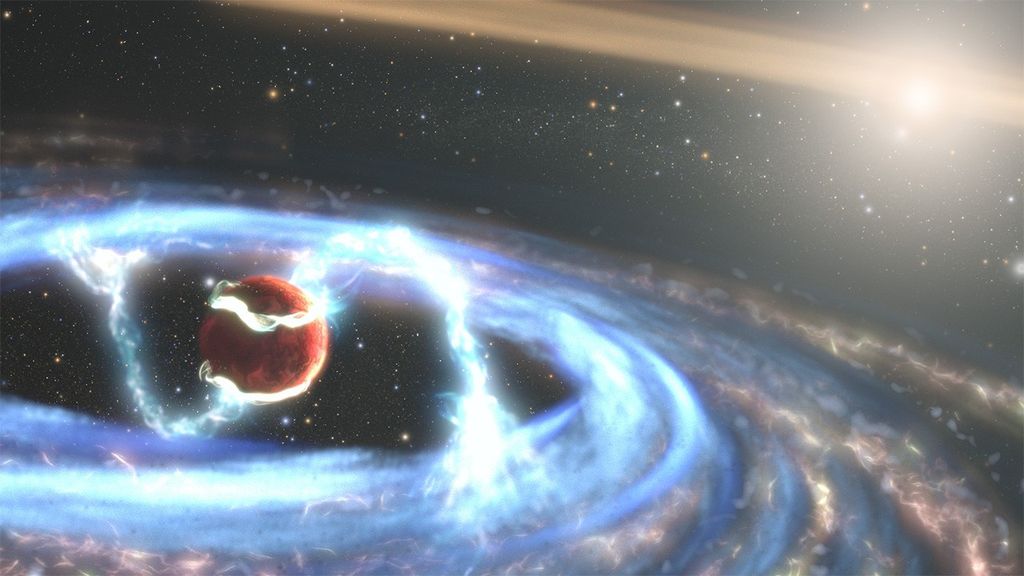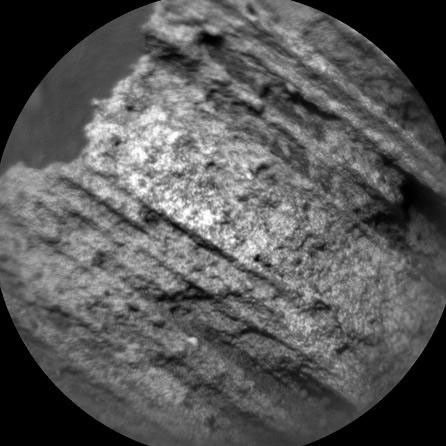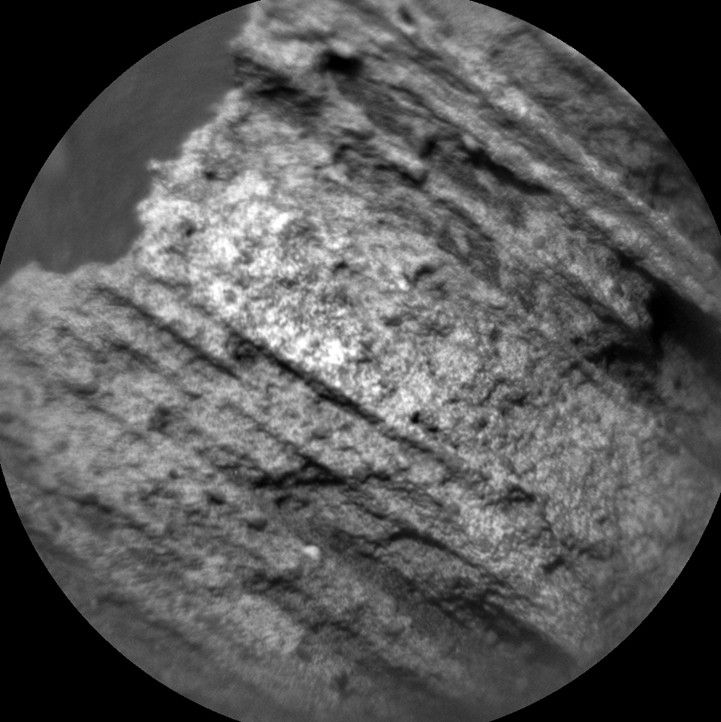Auto-Focused on Details in “Yellowjacket” on Mars
| Credit | NASA/JPL-Caltech/LANL/CNES/IRAP/LPGNantes/CNRS/IAS |
|---|---|
| Language |
|
This image from the Chemistry and Camera (ChemCam) instrument on NASA's Curiosity Mars rover shows detailed texture of a rock target called "Yellowjacket" on Mars' Mount Sharp. This was the first rock target for ChemCam after checkout of restored capability for autonomous focusing.
The image covers a patch of rock surface about 2.5 inches (6 centimeters) across. It was taken on May 15, 2015, during the mission's 986th Martian day, or sol. ChemCam's Remote Micro-Imager camera, on top of Curiosity's mast, captured the image from a distance of about 8 feet (2.4 meters). ChemCam also hit the target with laser pulses and recorded spectrographic information from the resulting flashes to reveal the chemical composition.
Yellowjacket, located near an area called "Logan Pass" on lower Mount Sharp, is a layered sedimentary rock. The laser analysis yielded a composition very close to that of Mars soil and unlike the lakebed sedimentary compositions observed at lower elevations earlier in the mission. The soil-like composition may indicate that the rock formed from sediment transported by wind, rather than by water.
ChemCam is one of 10 instruments in Curiosity's science payload. The U.S. Department of Energy's Los Alamos National Laboratory, in Los Alamos, New Mexico, developed ChemCam in partnership with scientists and engineers funded by the French national space agency (CNES), the University of Toulouse and the French national research agency (CNRS). More information about ChemCam is available at http://www.msl-chemcam.com/ .



























